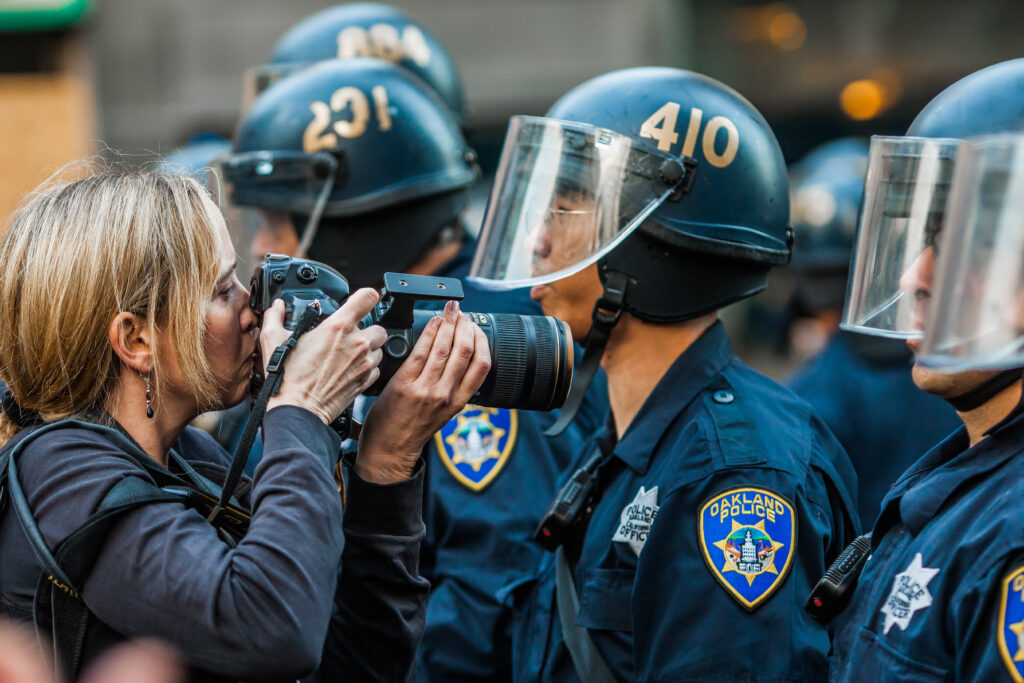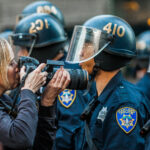Policing has become hyperpoliticized and polarized to the detriment of the profession and the people it serves. Problematic messages include If you work with or for the police, you must be a racist; If you criticize an officer’s actions, you must be an anarchist; If Black lives matter, blue lives don’t (and vice versa); The only answer to better public safety is either abolishing the police or hiring more cops. None of these is categorically true, but we can sometimes be stuck at the extreme edges of politics and public opinion.
I’ve been lucky to spend most of my career in that messy middle, and the clearest lesson I’ve learned is this: the vast majority of people want the same thing. Police leaders and communities want the public and the officers who serve them to be safe, and they want public safety services that are fair and equitable.
This is not exactly fertile ground on which to sow seeds of change. My dear friend and colleague Ganesha Martin said it best in her 2023 op-ed in USA Today: “Before progress is possible, we must agree to meet in what I call the ‘messy middle,’ a place of tension and trauma but also great potential . . . [I]t is in these rooms that real work is done, answers are born and, ultimately, lives are saved.”
Too often, however, conversations—especially conversations about fairness—focus on what police can’t or shouldn’t do. This makes some sense; the founders wrote the Constitution to form a more perfect union, in large part by restricting government power. But reinforcing the limits of police authority is simply not enough.
Police can be—must be—at the forefront of creating the more perfect union the Constitution promises. They—more than any other profession—are poised to become proactive catalysts for safety and equity at a time where some communities view them as a major threat to those democratic ideals.
To get there, we must meet in the messy middle to collaboratively develop two key premises: what police do and who police are.

What police do. In a safer, fairer future, we all have a shared, evidence-informed under standing of what police should do and how they should do it.
There are no national standards for policing. There are important reasons why—federalism chief among them. But the lack of clarity about what police should do and how they should do it leaves municipal leaders, police leaders, and community advocates pushing in differ ent and at times inconsistent and counterproductive directions. I recall a conversation with a police leader in the summer of 2020 who reflected, “We’re trying to do the right thing here. But at this point, someone’s gotta tell us what that is.”
We may not have national standards, but we do have a growing sense of what matters and what works to keep people safe. There have been huge advancements in the development and application of police research to practice in the last decade alone, with the establishment of the National Institute of Justice’s Law Enforcement Advancing Data and Science program, the American Society of Evidence-Based Policing (and its counterparts in Australia and New Zealand, the United Kingdom, and Canada), the continued growth of the Center for Evidence-Based Crime Policy at George Mason University, and the development of the Excellence in Policing & Public Safety Program at the University of South Carolina Joseph F. Rice School of Law (which I was fortunate to join last year as Executive Director), to name a few.
And we even have a lodestar that largely defines what effective and fair policing looks like and how it is best achieved. The American Law Institute recently concluded its seven-year effort to establish principles for police practice that reflect the latest scientific research, legal precedents, industry best and promising practices, community priorities, historical context, technological developments, and ethical considerations.
These Policing Principles of Law were developed by a nonpartisan stakeholder group of police leaders, community advocates, legal scholars, scientific researchers, and policymakers—the messy middle in action. The Principles address a broad range of critical issues in policing and, if leveraged properly, could define our shared understanding of what police should do to advance a safer, fairer future.
But there is a lot of tough, intentional work that needs to be done to distill the Principles’ 14 volumes and translate hundreds of pages into implementable policy, training, data, and accountability frameworks. Like the Principles, these frameworks must be developed in the messy middle, with meaningful input across all stakeholder groups. And they must be mindfully created to ensure they are useful and effective regardless of an agency’s size, mission, or geographic location.
This collaboration will require significant support from a broad range of funders who must be willing to invest in stepwise, nuanced, and, at times, painstaking work. The work won’t be quick or sexy. It doesn’t lend itself to headlines or soundbites, and it won’t appease everyone—especially people on political extremes. But it is needed. And it may be our best shot.
Who police are. In a safer, fairer future, departments are staffed by the most qualified people for the job and reflect the communities they serve.
I co-founded the 30×30 Initiative to improve the representation and experiences of women in policing with Chief (ret.) Ivonne Roman in 2021. A strong body of scientific evidence demonstrates the unique value of women officers in creating a safer, fairer future. Research suggests women officers use force and excessive force less often than men, get better out comes for crime victims, are named in fewer complaints and lawsuits, and are perceived as more trustworthy and compassionate.
Despite these obvious benefits, women still make up just shy of 13 percent of sworn officers in this country and only 3 percent of police leaders. One of the major factors that drives this lack of representation is that we, as a nation, have done a poor job of understanding and assessing what it takes to be an effective and fair police officer. Many departments use extremely outdated assessments designed by a homogenous group using little, if any, scientific rigor. Most officer candidate assessments have yet to be validated to show they reflect or accurately assess what is required to do the job well, and some may amount to constitutional violations by disproportionately excluding certain groups—including women.
These flawed assessments mean departments are losing otherwise qualified candidates in the middle of a nationwide hiring crisis. This isn’t about lowering standards to bring more people in the door; it’s about developing accurate standards to bring the best people in. And it is not enough just to get those people in; departments must intentionally create inclusive cultures that ensure all officers an equitable shot at thriving at every stage of their career.
Improving assessments and reducing inherent bias should result in a more diverse and representative workforce with a variety of life experiences, viewpoints, and priorities that will improve public safety outcomes.
Given the incredible importance of policing in a democratic society and the broad range of responsibilities we impose on our officers, it is almost unthinkable that there is so little research on who our officers should be. The Federal Government and other funders could and should invest in empirically identifying and assessing the most important officer attributes. Police leaders and the communities they serve deserve to know that the people in uniform are the ones best suited for the job. It’s hard to imagine a safer, fairer future without those insights.
A diverse workforce also improves agencies’ access to the perspectives of the people they serve, closing the distance between officers and the people who need them most. It’s a lot easier to meet in the middle when the middle is closer to where you stand.
Editor’s Note: This story is reprinted with permission from American Policing where it first appeared in September 2024.
Maureen “Mo” McGough is the co-founder of the 30×30 Initiative to advance women in policing and the Executive Director of the Center for Excellence in Policing and Public Safety at the University of South Carolina School of Law. She is the former chief of Strategic Initiatives at the Policing Project at NYU Law, and spent much of her career with the Federal Government in various roles with the U.S. Department of Justice and U.S. Department of State, including Senior Policy Advisor to the Director of the National Institute of Justice, counsel on terrorism prevention to the Deputy Attorney General, Special Assistant U.S. Attorney for the District of Columbia, and coordinator for federal AIDS relief efforts through the U.S. Embassy in Kigali, Rwanda. Maureen is an attorney and earned her JD from the George Washington University Law School.

